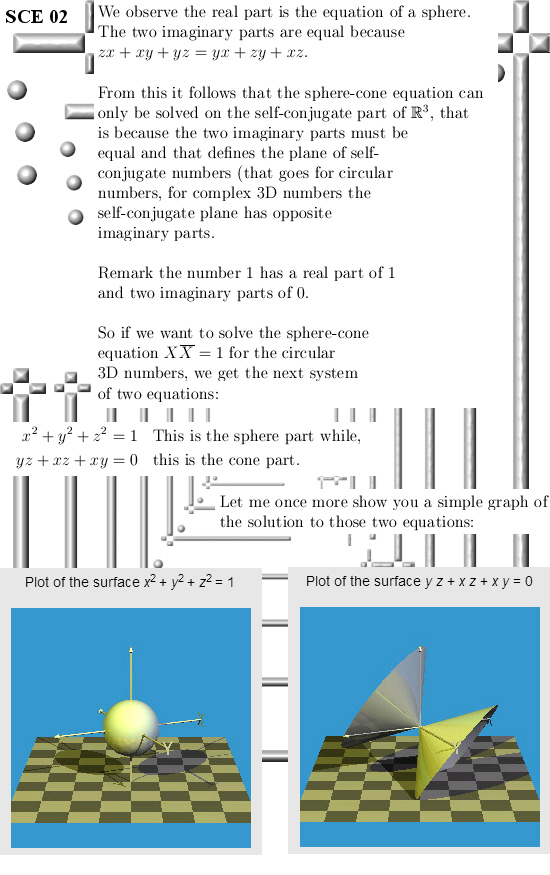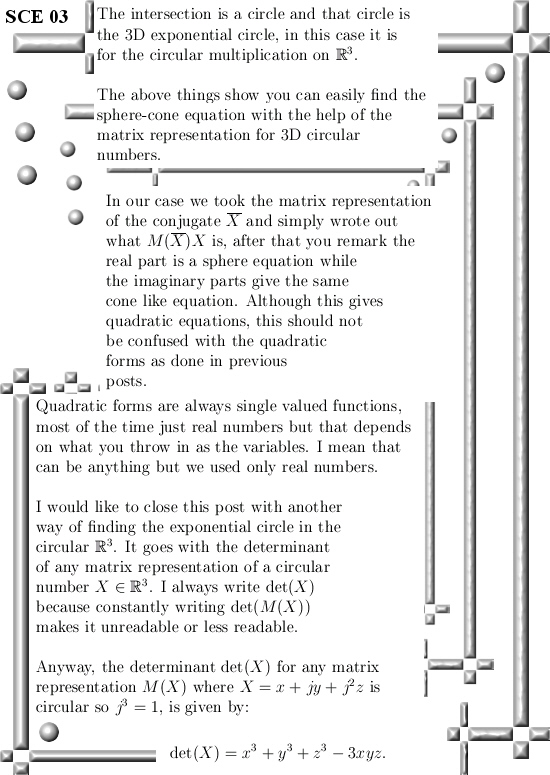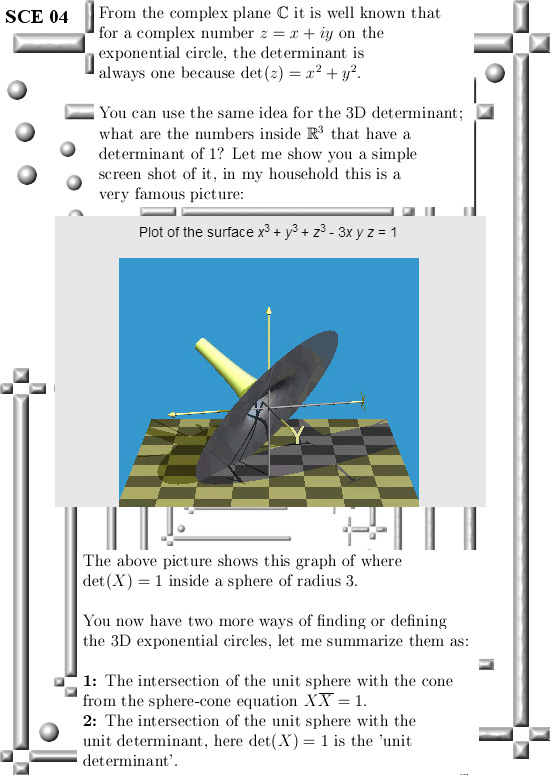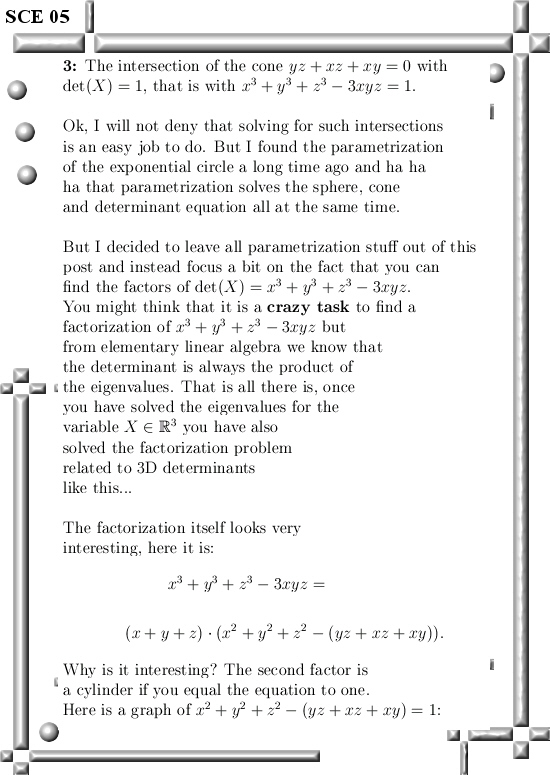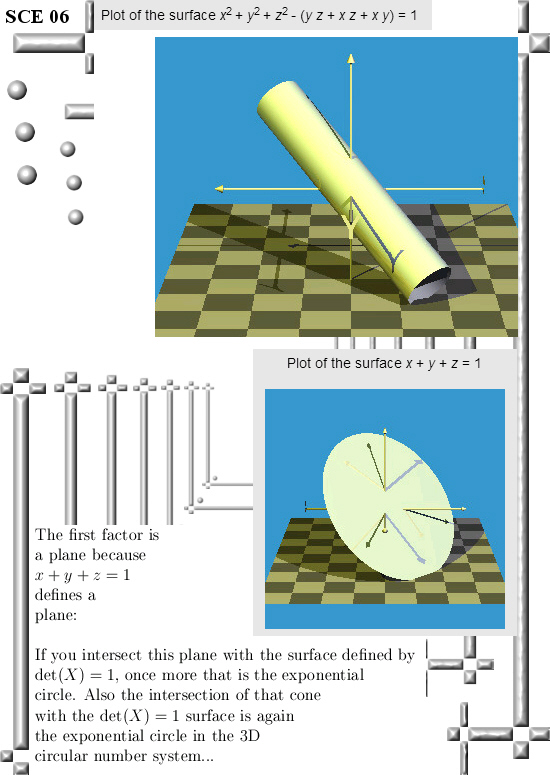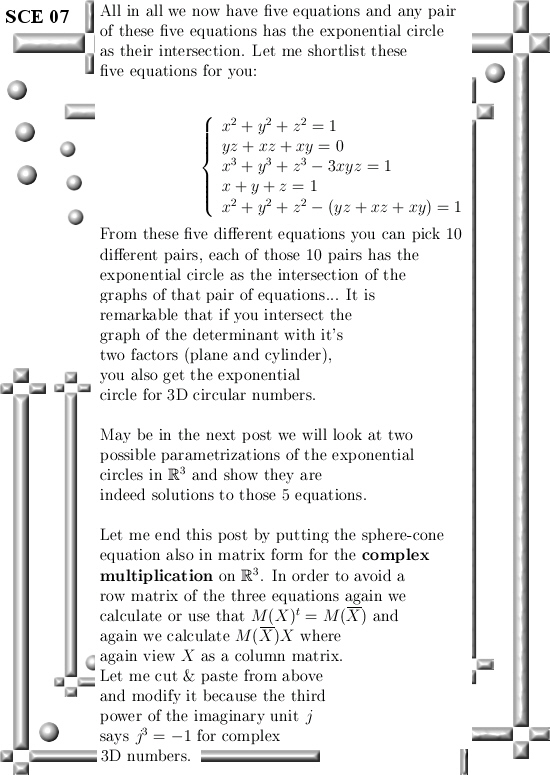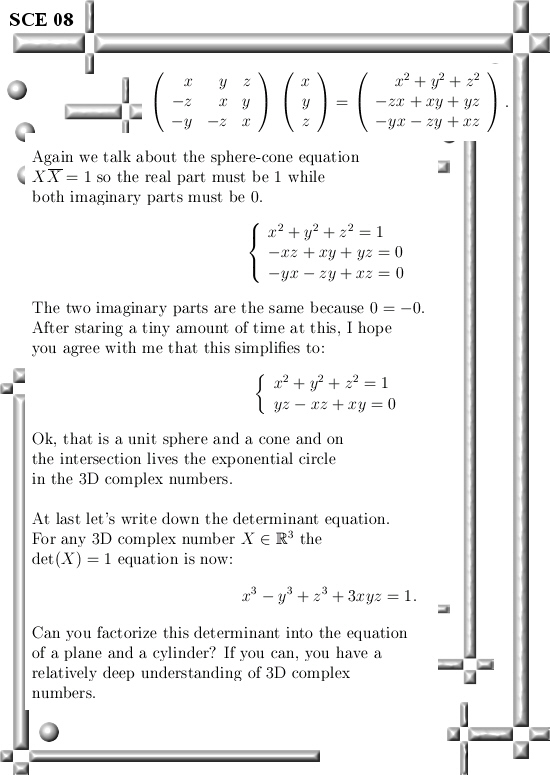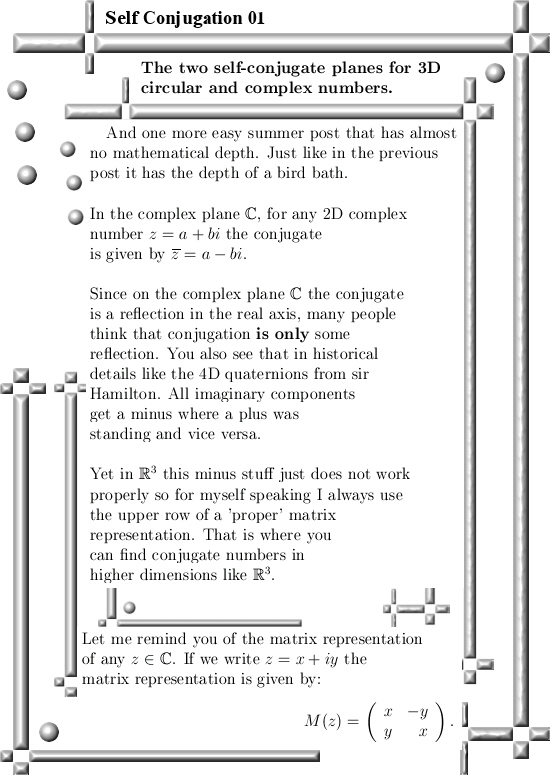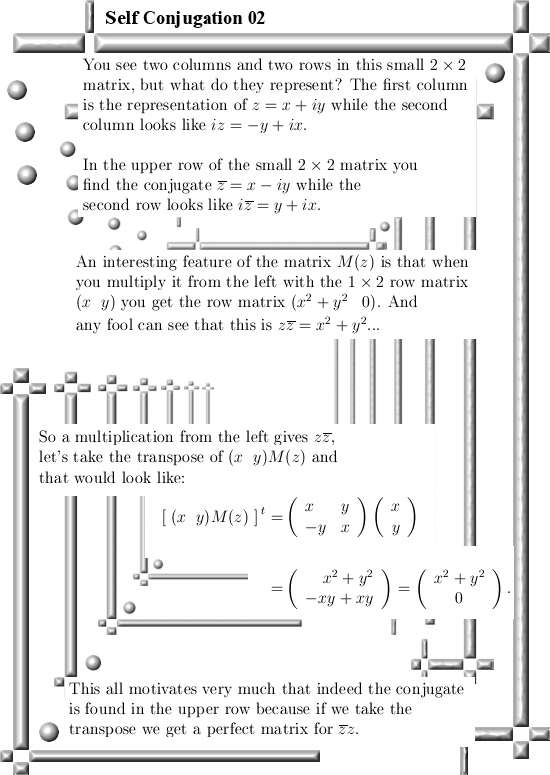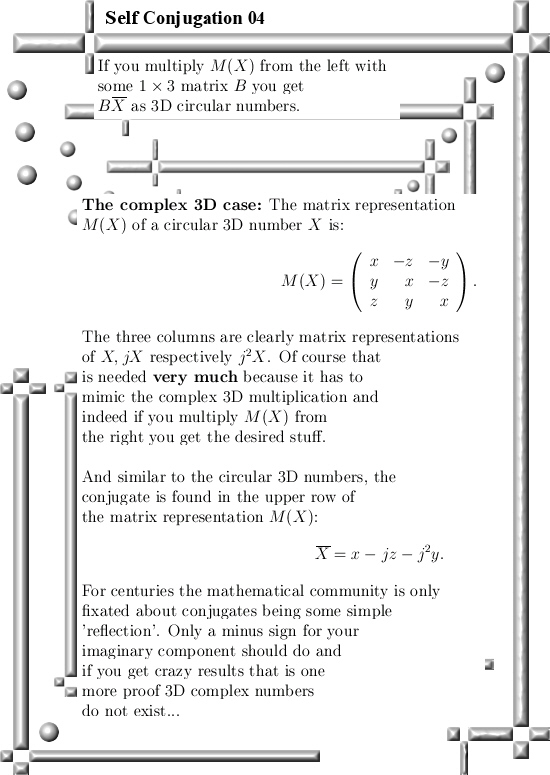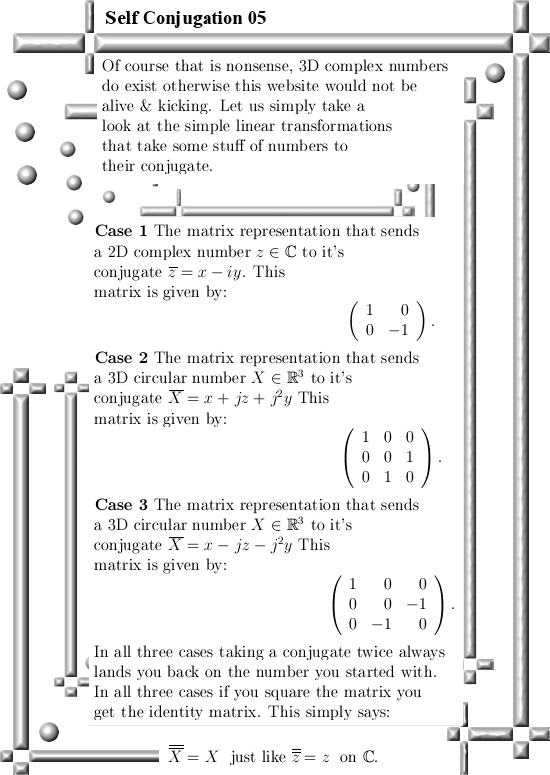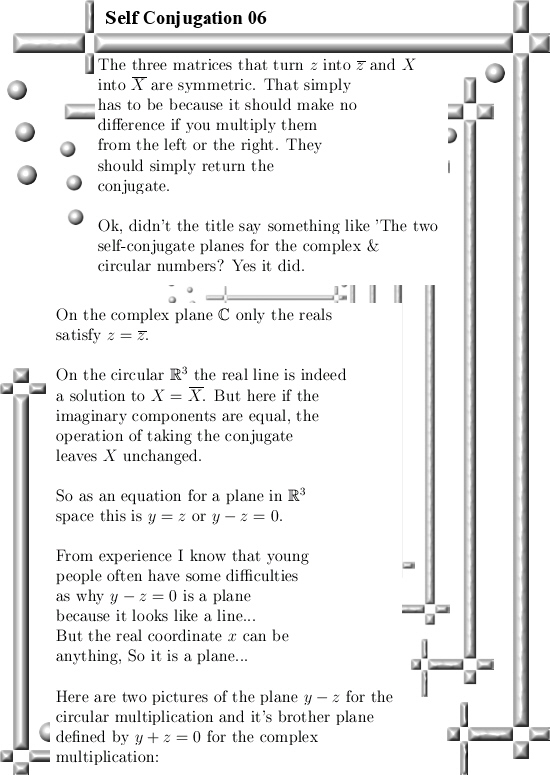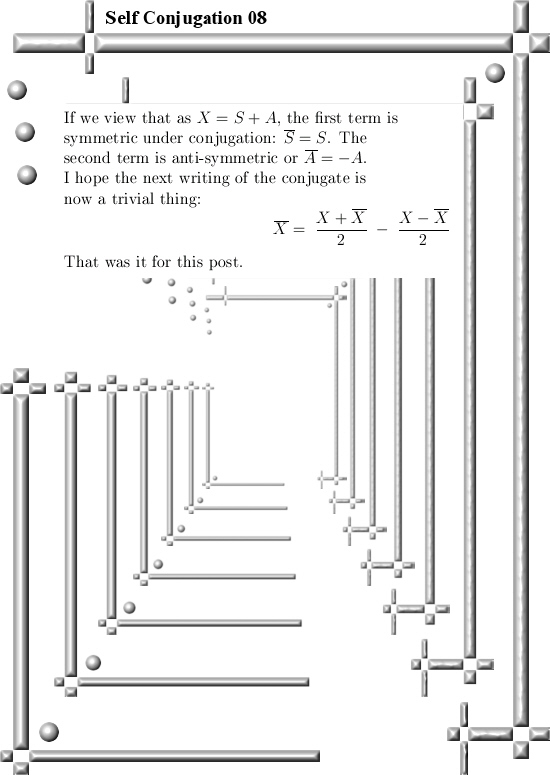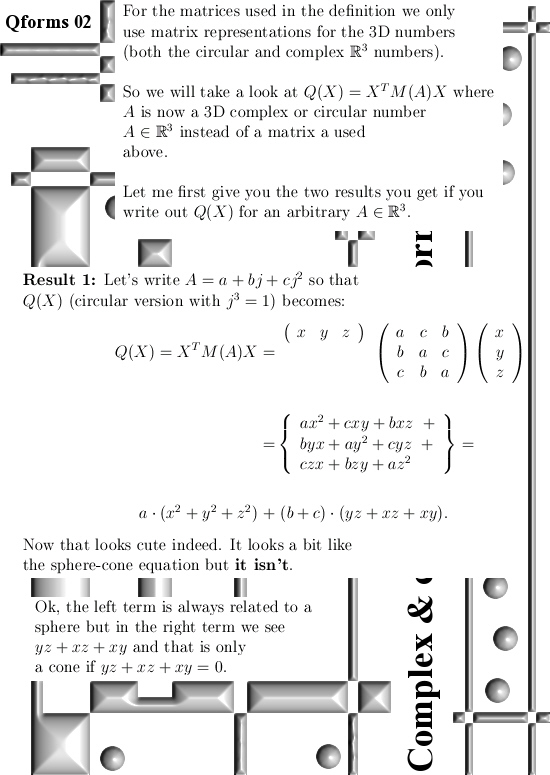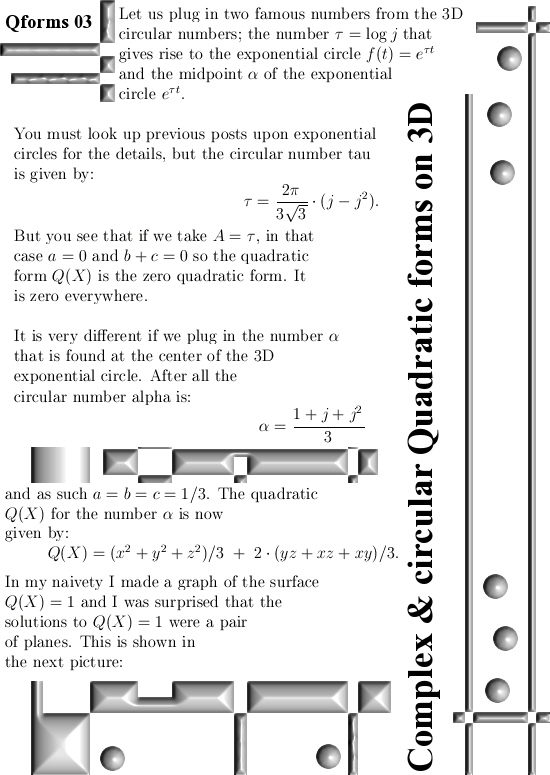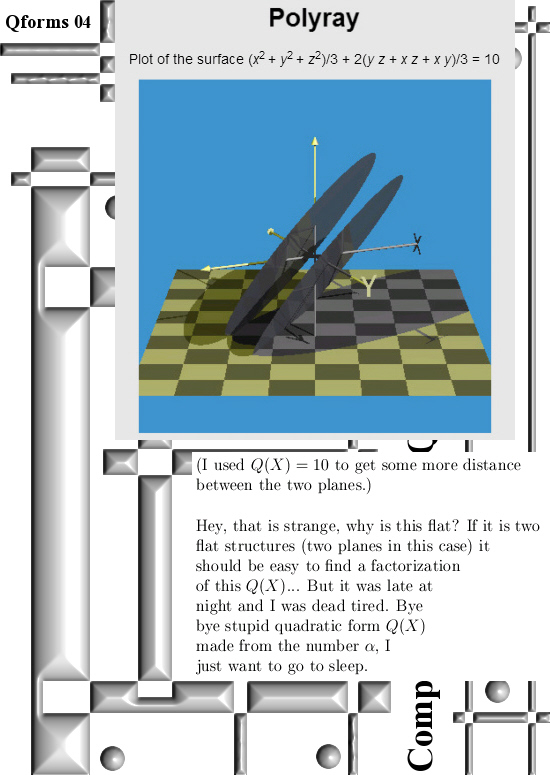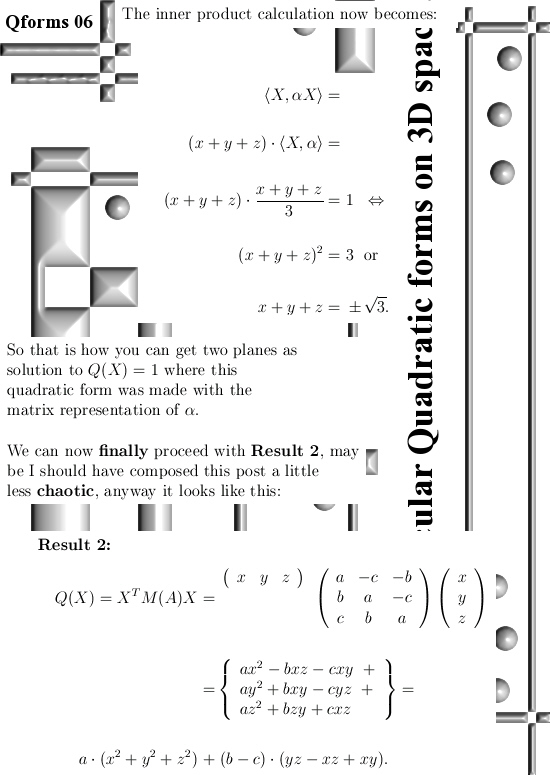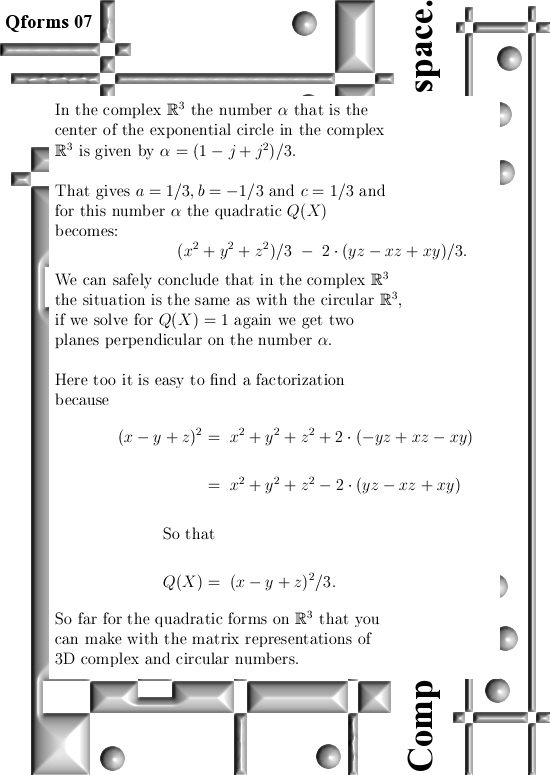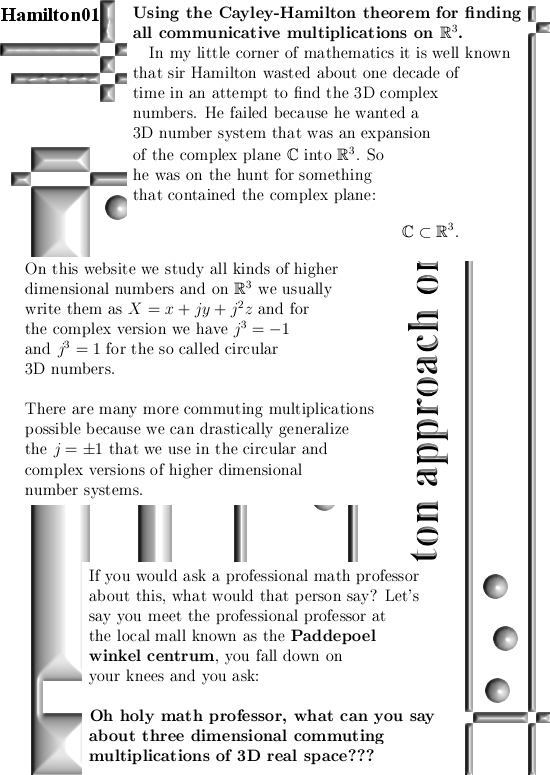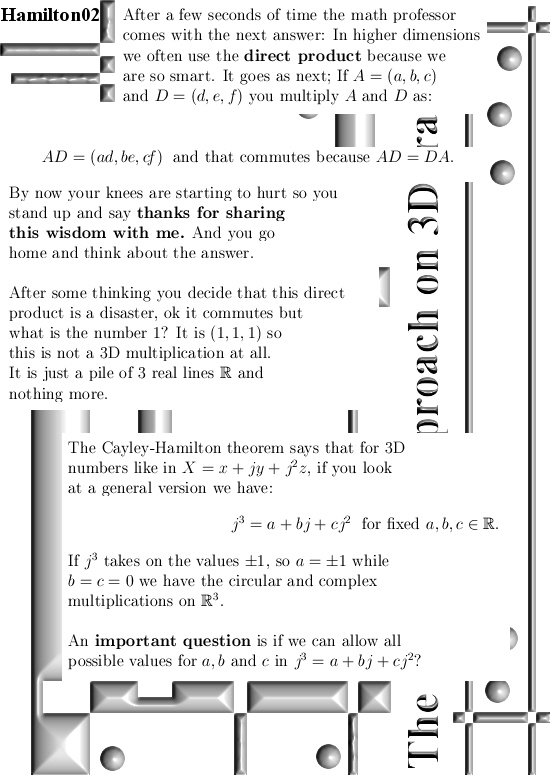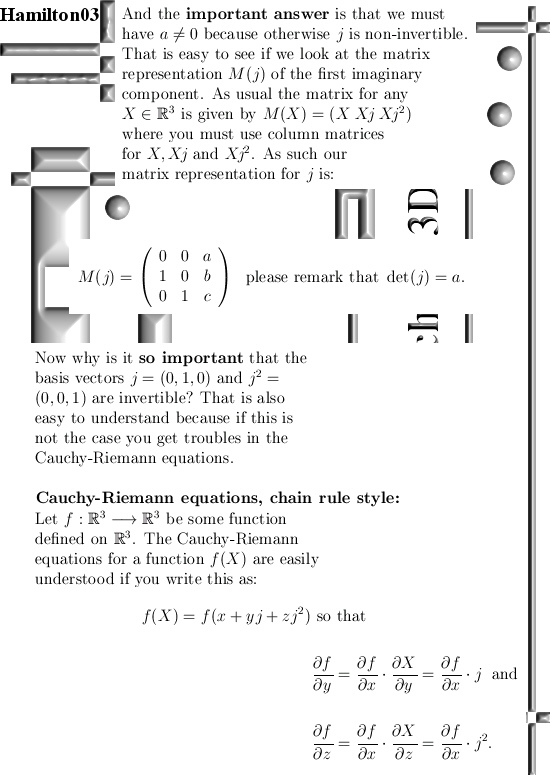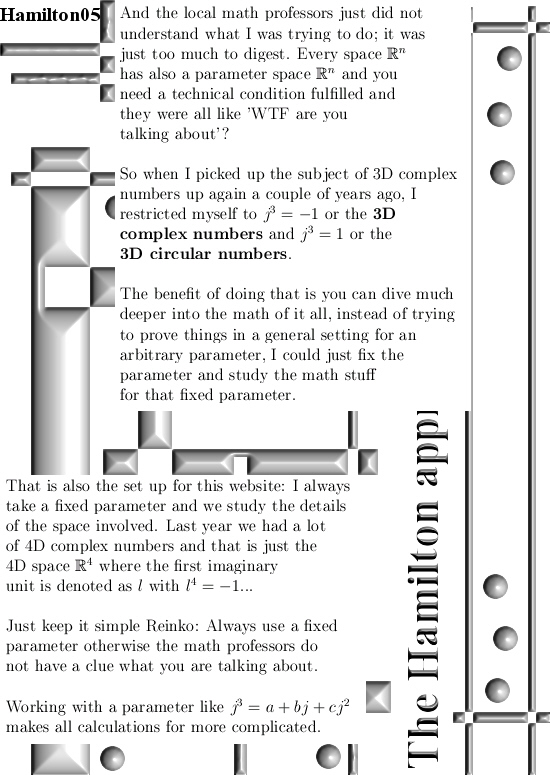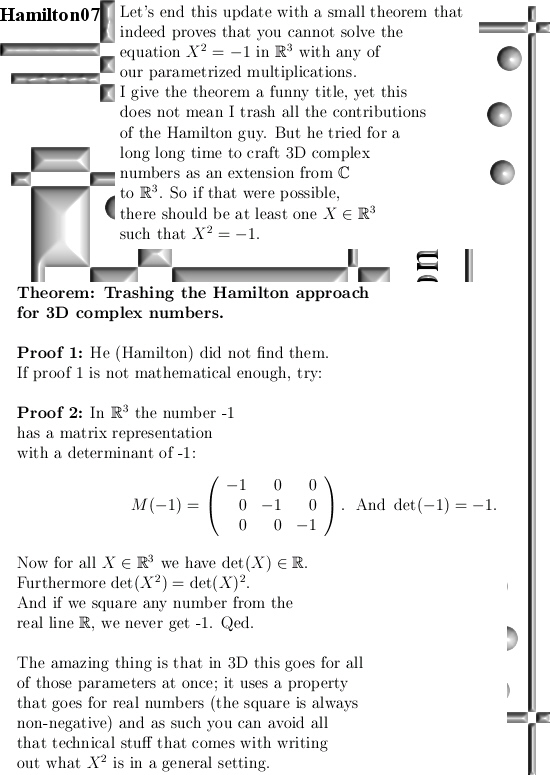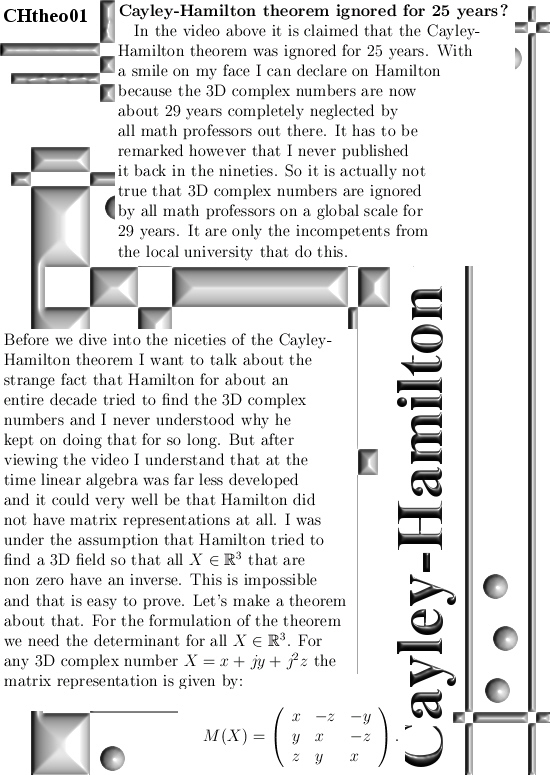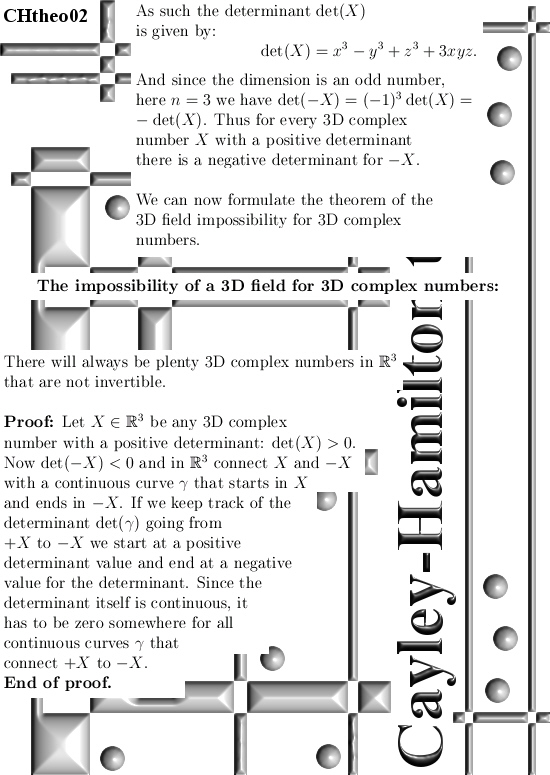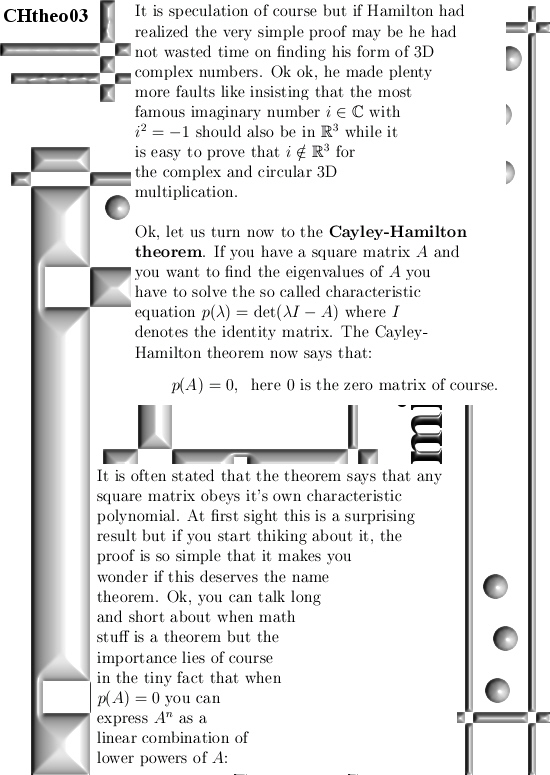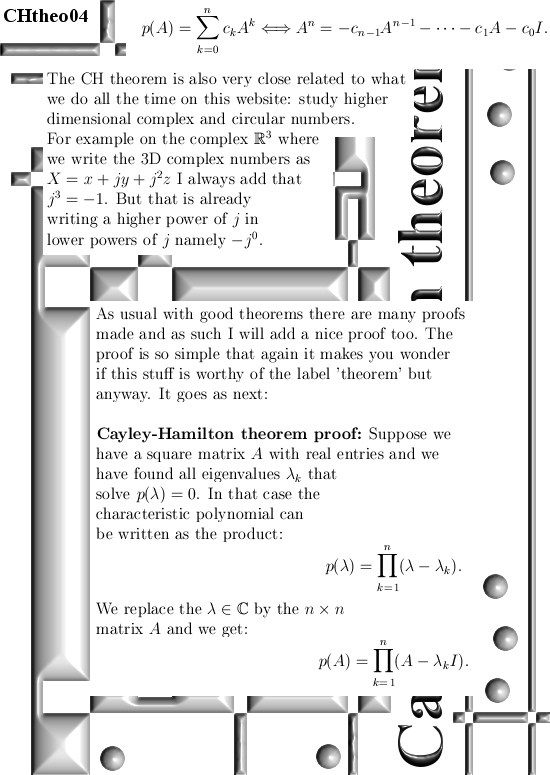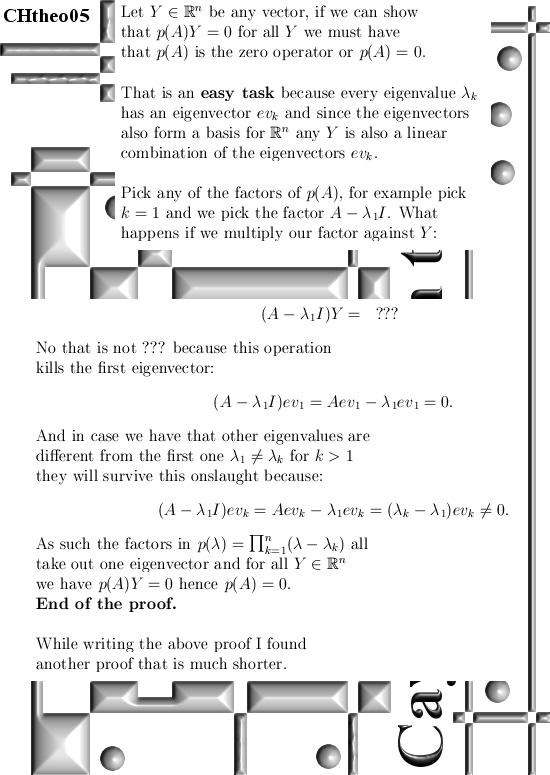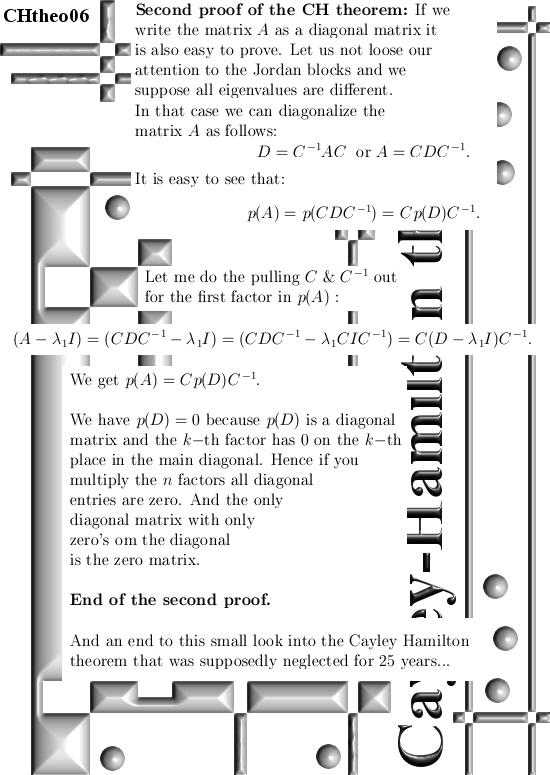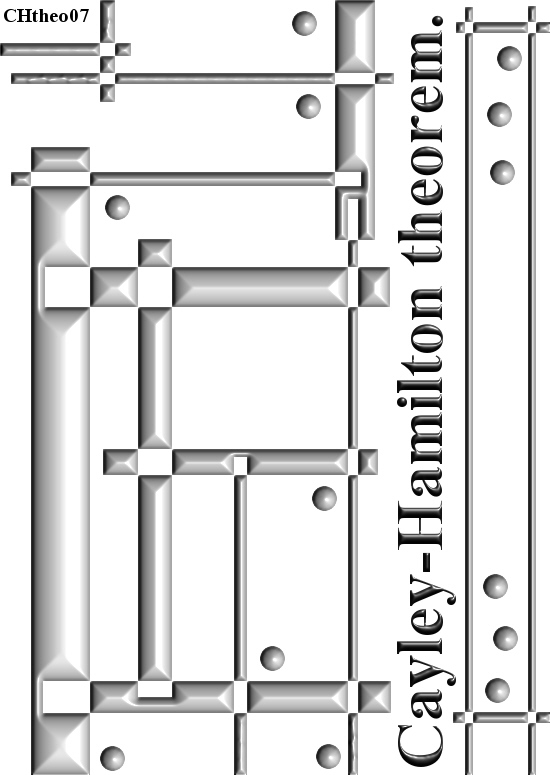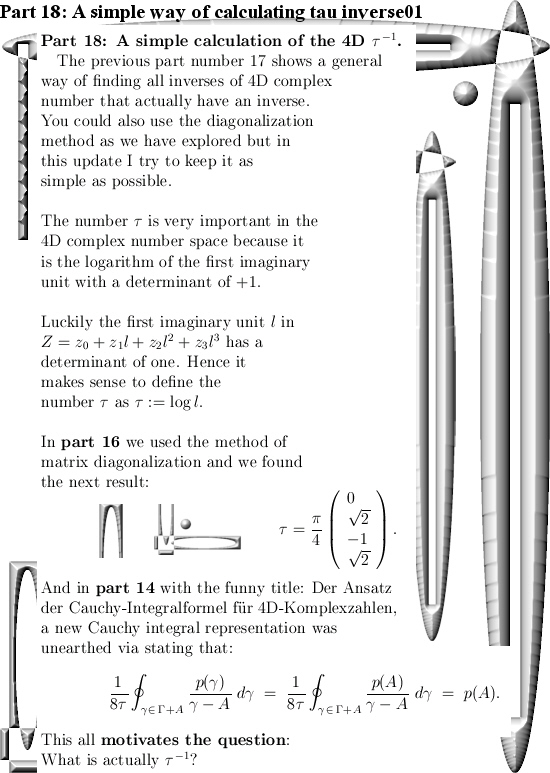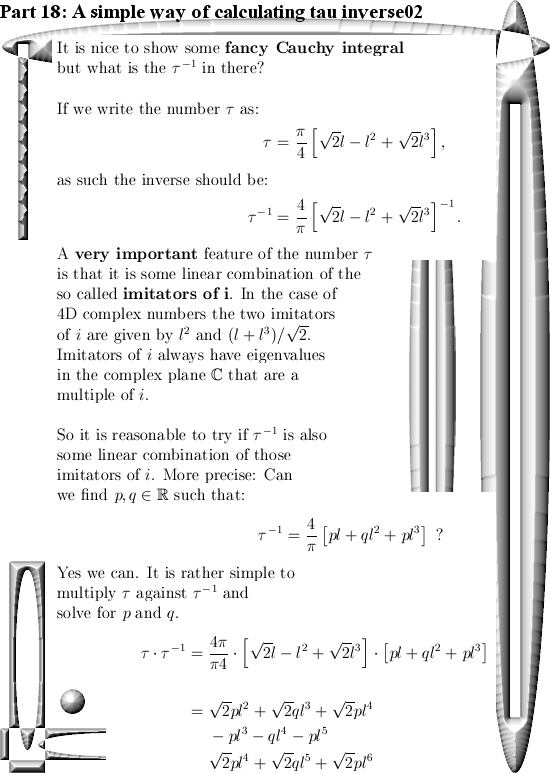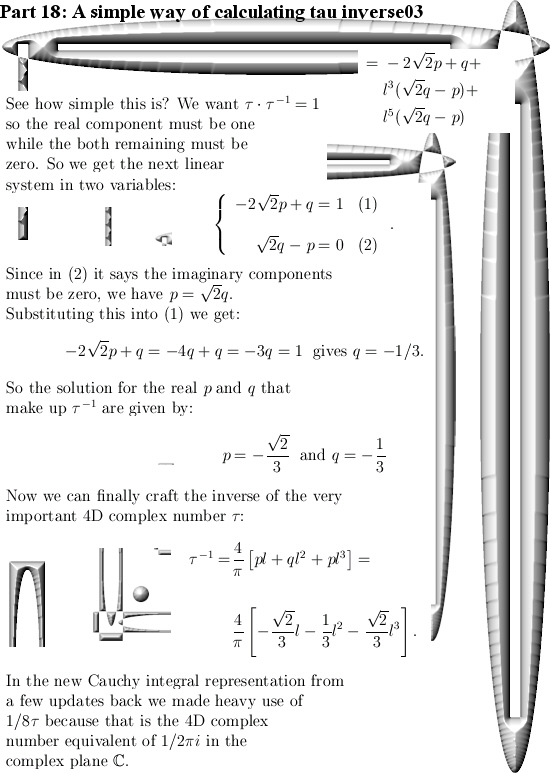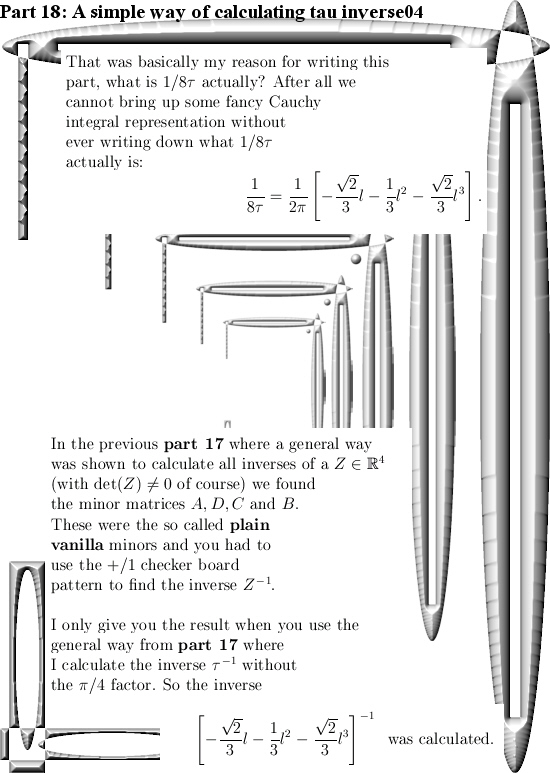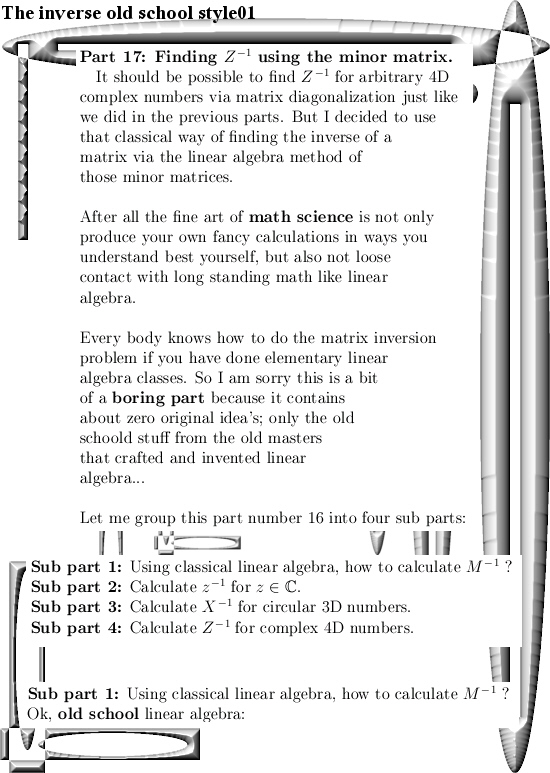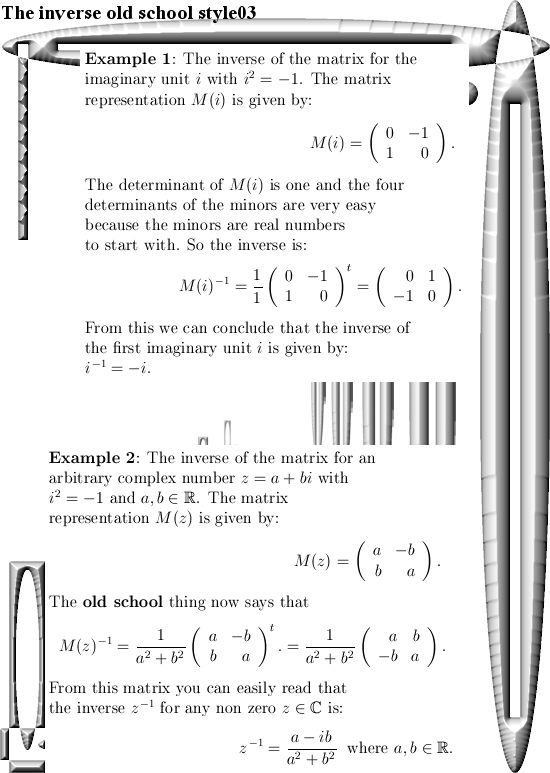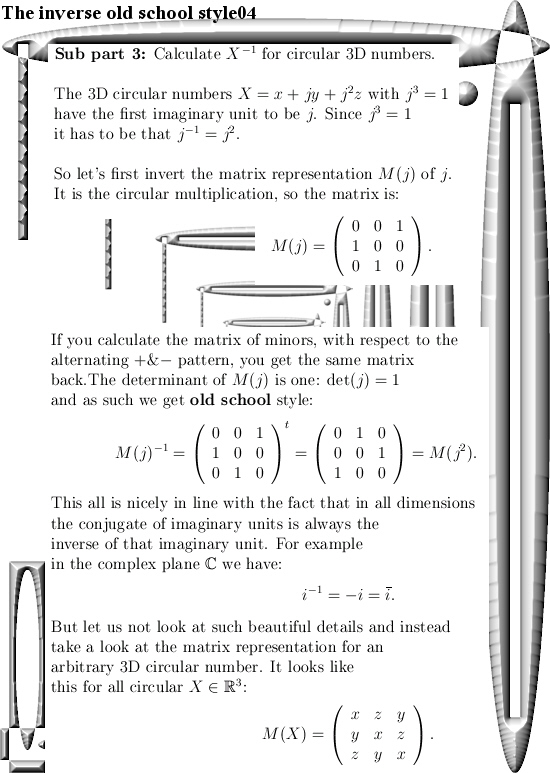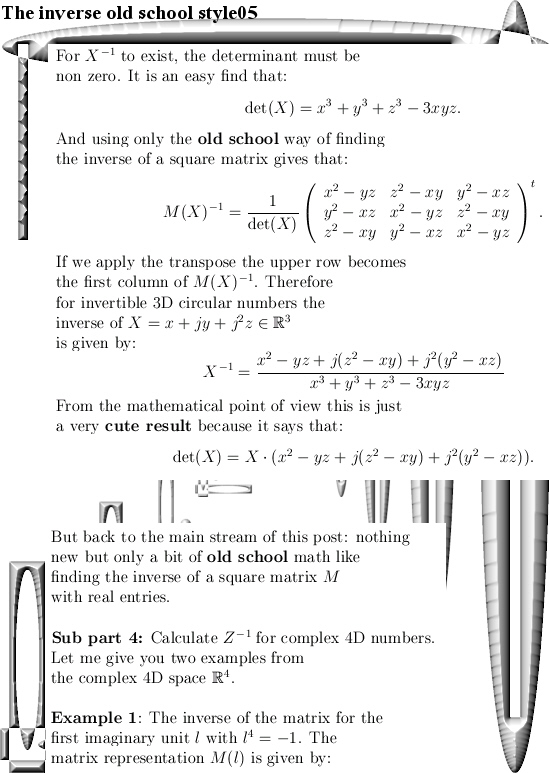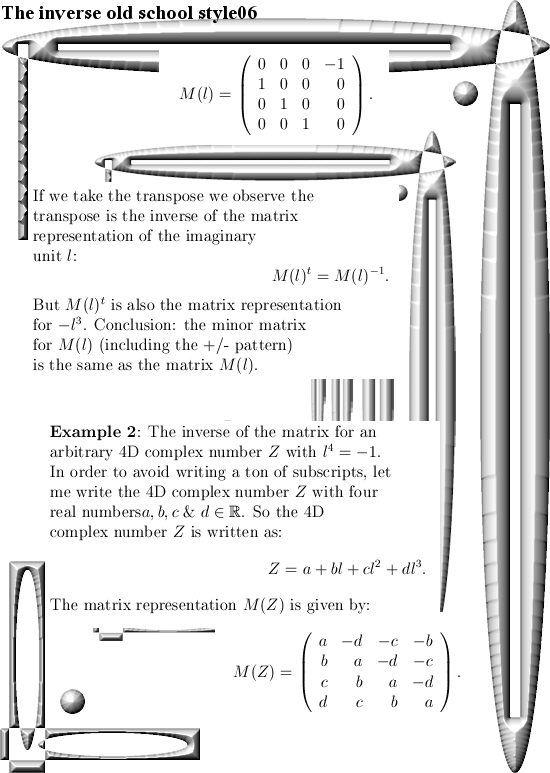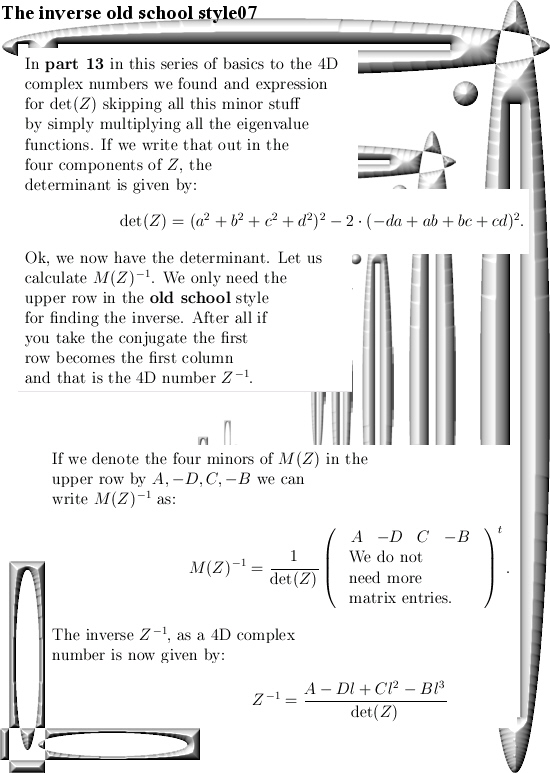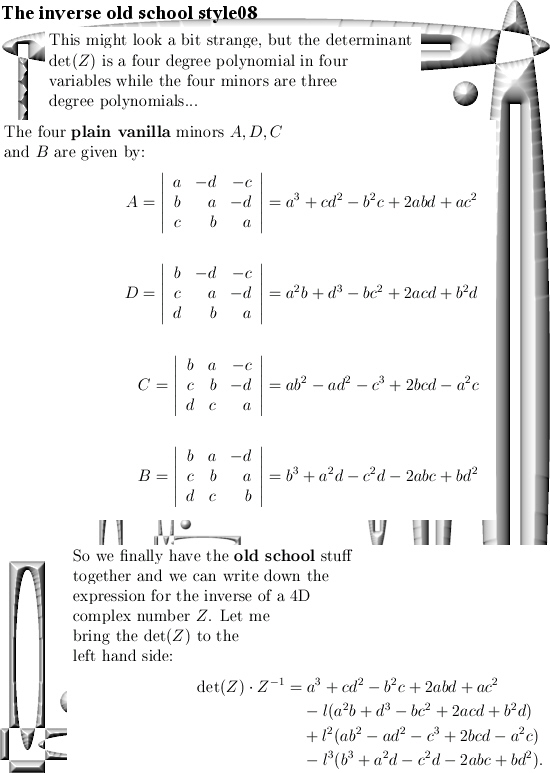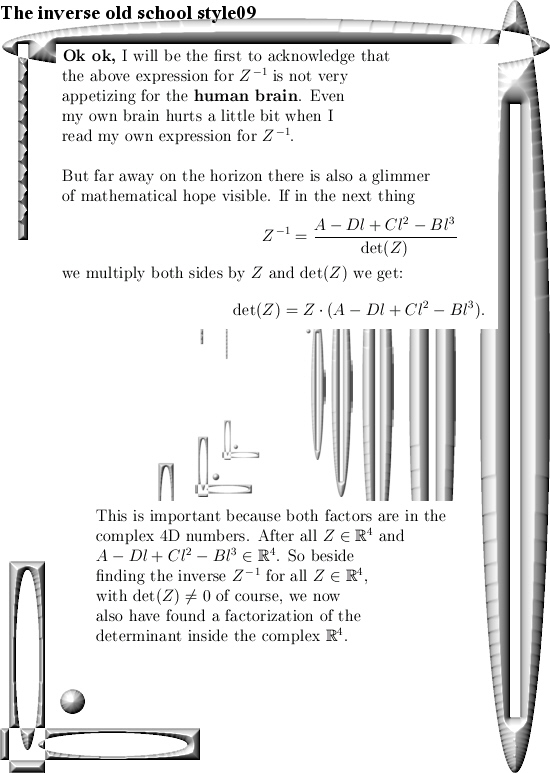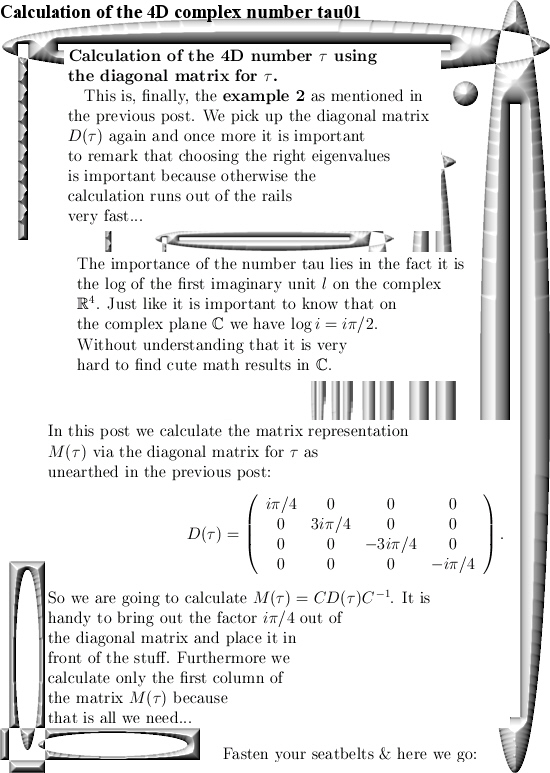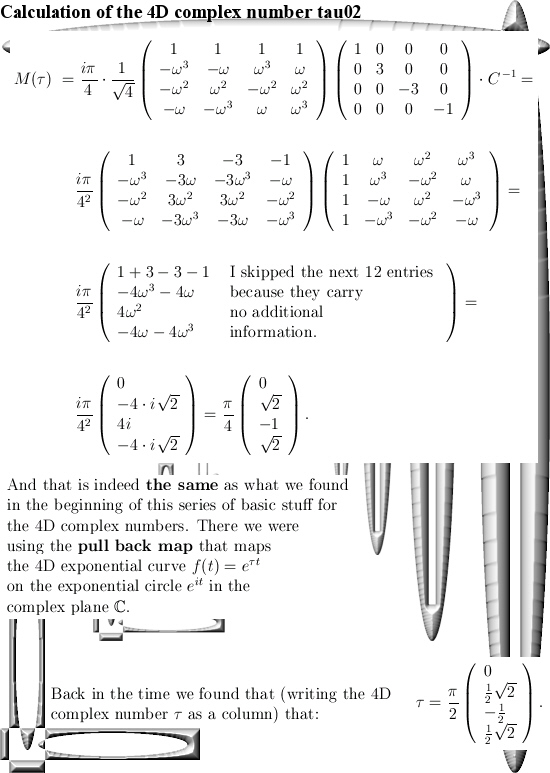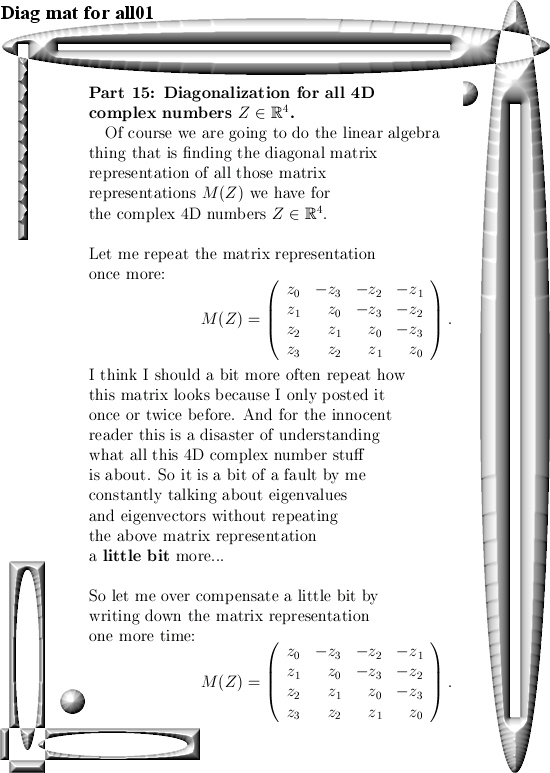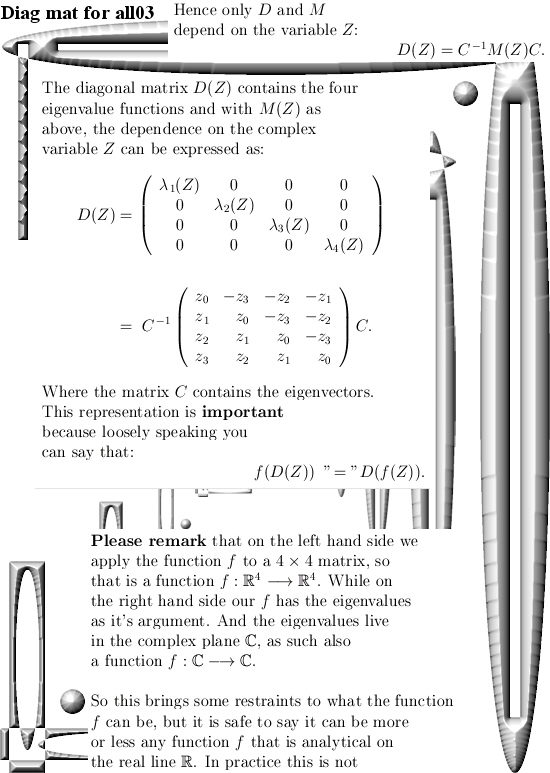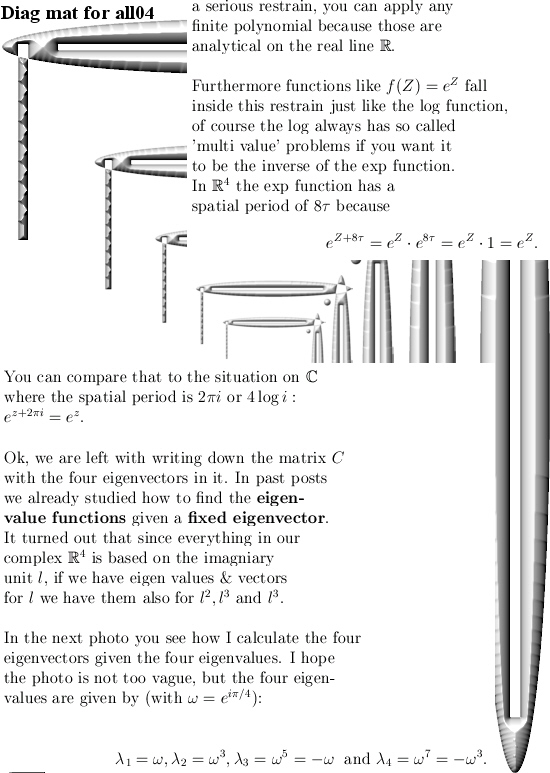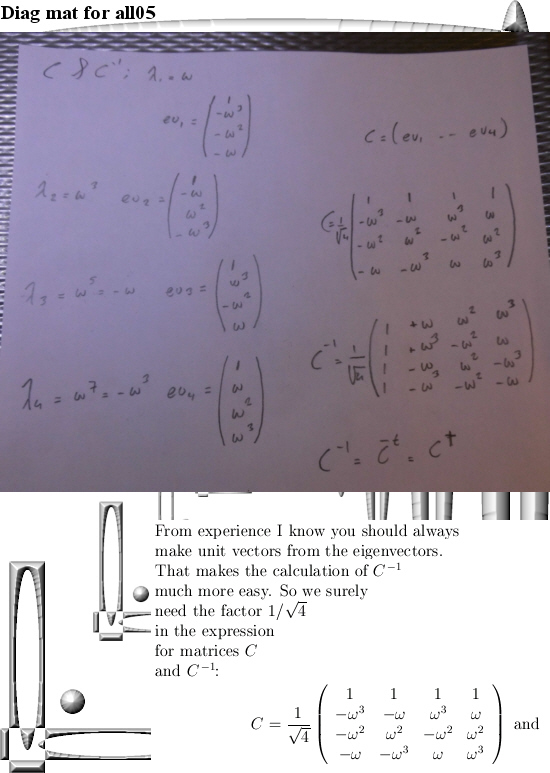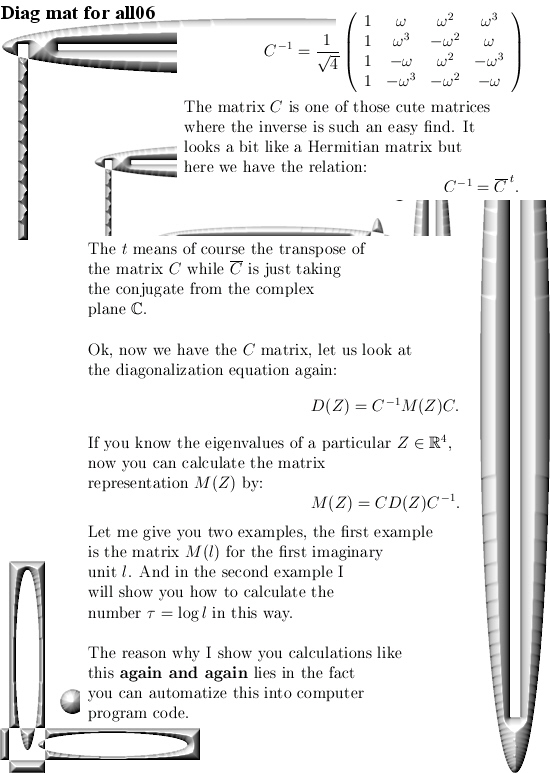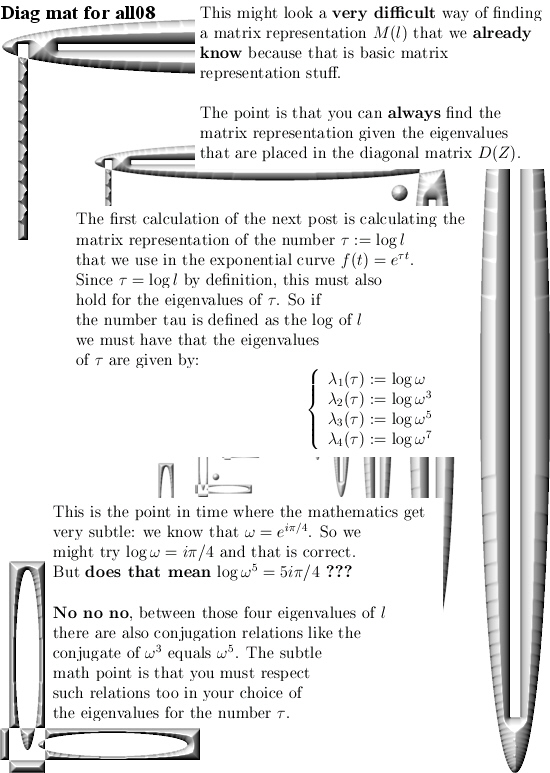Ok ok I was a bit lazy but it is finished now so let’s finally post this scalar replacement theorem. Never in this post I formulate or proof this scalar replacement theorem, but basically this theorem says that if you replace the real numbers (scalars) in the way you describe say 2D split complex numbers by numbers from the complex plane, the result is a space who’s numbers also commute and it even has viable Cauchy Riemann equations. In this post I will write z = x + yj for the 2D circular numbers (also known as the split complex numbers) and write z = x + yi for numbers from the complex plane. If you combine such spaces it must have imaginary units that are different in notation, so j is the imaginary unit that does j^2 = 1 while the good ol i from the complex plane is known for it’s important property that i^2 = -1.
If we replace the x and y in z = x + yj by complex numbers we get a new 4D space where both j and i place there role. All in all those 4D numbers will be written as Z = a + bi + cj + dij. Of course the a, b, c and d are real numbers and as such this new space is 4D.
A long time ago I once used this to calculate the logatithm of j, it worked perfectly and that is why I more or less gave idea’s like that the name of ‘scalar replacement’. Later I found that way of using diagonalization of the matrix representations in order to calculate the logarithm, that is a far more general useable way of calculating logarithms but anyway the original calculation for log j was so cute, I could not abondon it and say to that calculation: From now on you are a poor orphan and no one will help you survive from day to day… How could I abandon such a calculation, better loose the UK a 100 times on a row than abandoning such nice calculations… 😉
But let’s go back to being a serious and responsible adult; the post is relatively long with 10 pictures. As usual I had to leave a lot out and I hope it is more or less easily readable. After all a lot of math out there looks like it is written by people who eat a plate of coal for breakfast. And if you eat coal for breakfast, likely this has an influence on the math you will produce on a particular day… Ok, here we go:

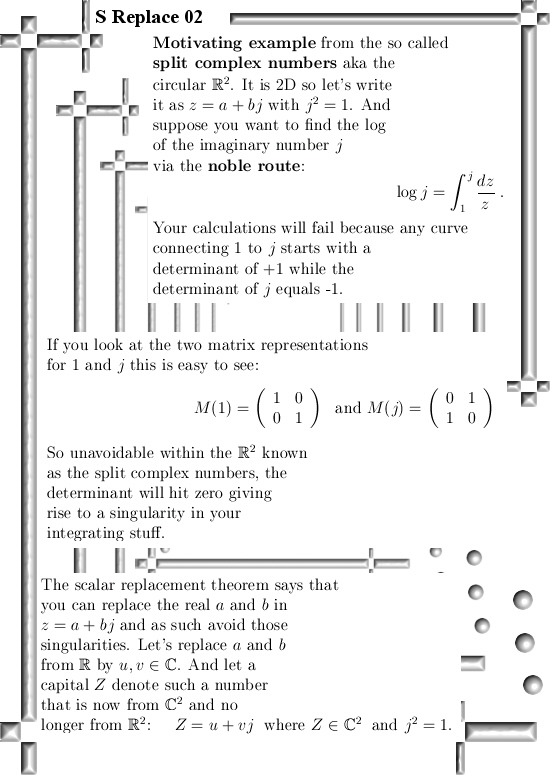
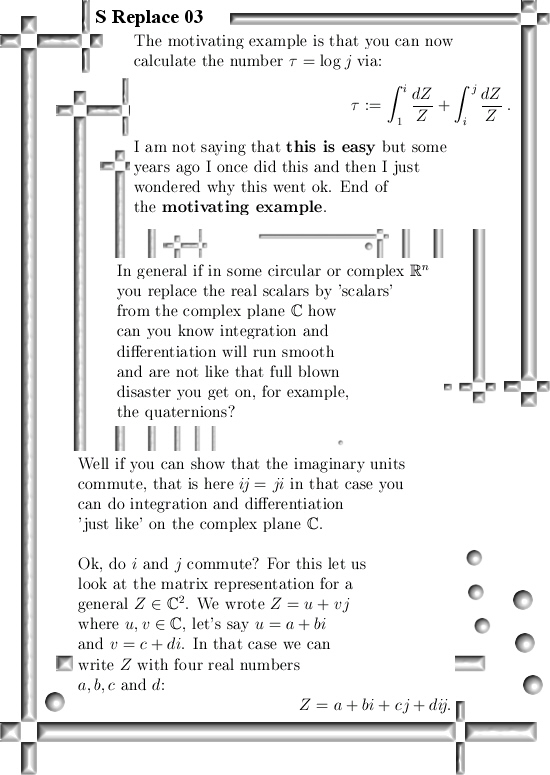
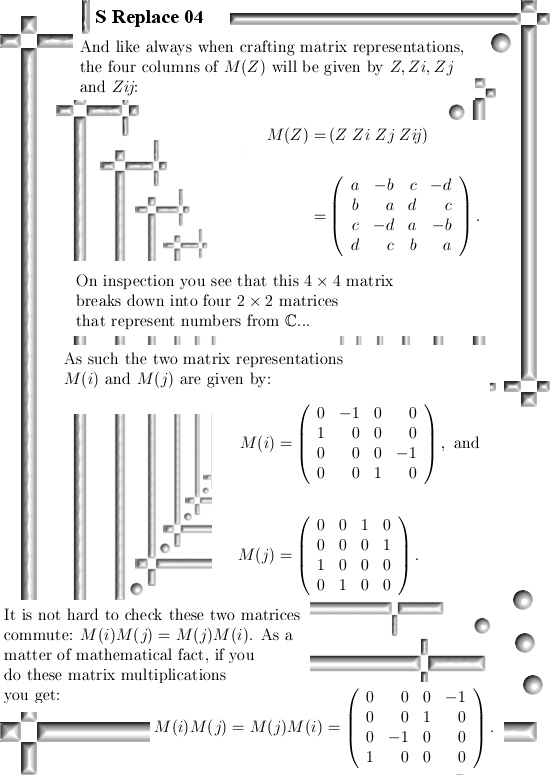

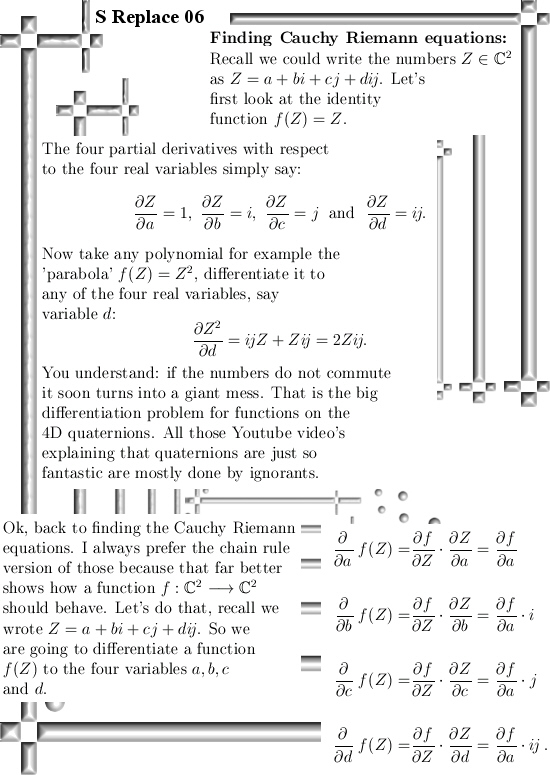
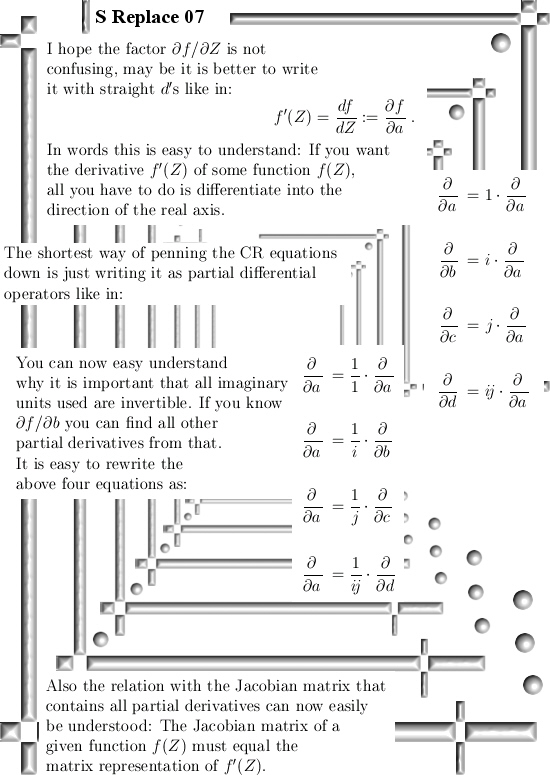
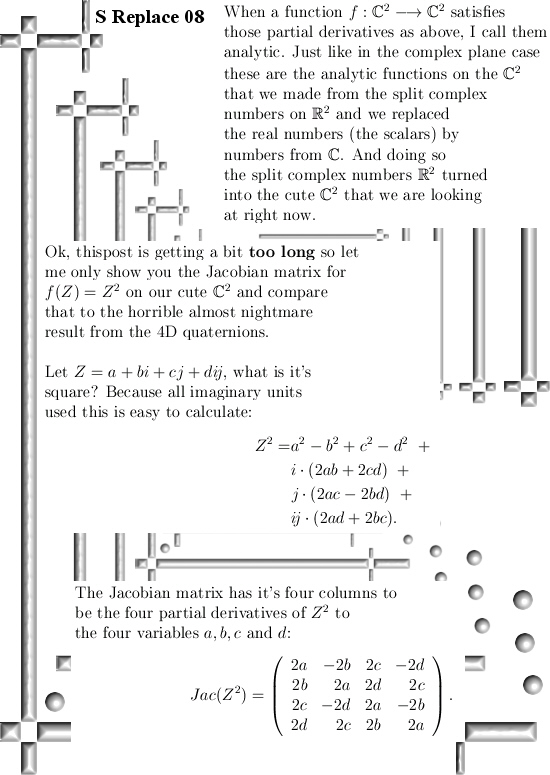

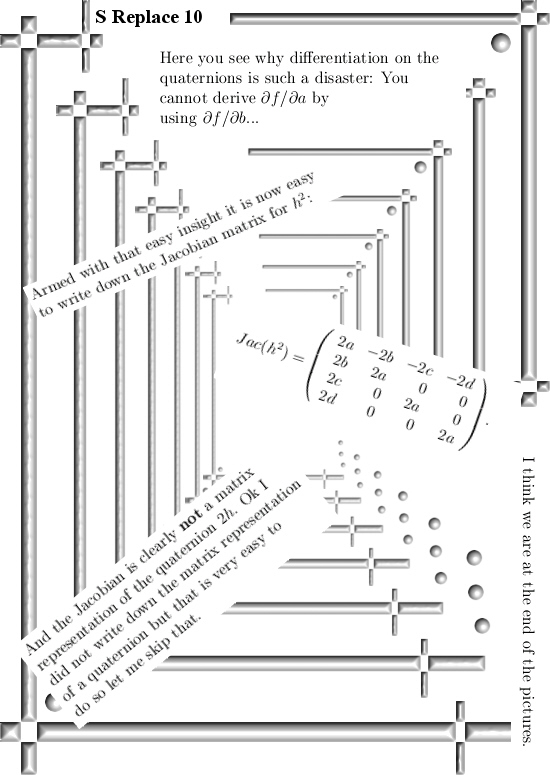
Ok, the goal of this post is of course to make you think a little bit about this 4D space and compare it to the quaternions and stuff. But last year on 2 March I posted the diagonalization method for finding the logarithm of an arbitrary split complex number. Below is a link.
Let me end this post with a funny mathematical joke about how to NOT WRITE MATH. Using a fucking lot of indices is not a way to make your work readable, here is a picture of what I view as some kind of mathematical joke.
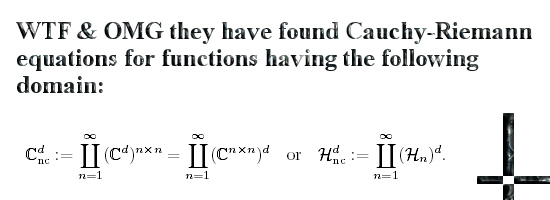
In case you desire a serious headache, go read that file.
https://arxiv.org/pdf/1906.09014.pdf
Ok, end of this post.

